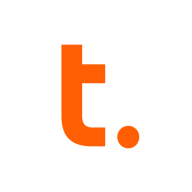

Teradata and Oracle Exadata are both prominent platforms in the data storage and processing market. Teradata appears to have an edge with its robust architecture and query tuning capabilities, while Exadata stands out for its performance enhancements through hardware and software integration.
Features: Teradata offers adaptive query tuning, workload management, and integration capabilities. Its shared-nothing architecture efficiently manages large data volumes. Oracle Exadata provides features like Smart Scan, Flash Cache, and Hybrid Columnar Compression. Its integration of hardware and software components improves performance for OLTP and data warehousing.
Room for Improvement: Teradata faces challenges with high costs, scalability issues, and integration with newer cloud environments. Users also express the need for better processing of transactional data. Oracle Exadata needs improvements in licensing costs and management complexity. Users seek more customization flexibility and enhanced replication features.
Ease of Deployment and Customer Service: Teradata supports flexibility across on-premises and cloud setups. While its customer service is highly rated, there are critiques regarding setup complexity and costs. Oracle Exadata offers integrated solutions that simplify management but can complicate deployment. Its customer service receives mixed reviews, though technical support is generally reliable.
Pricing and ROI: Both Teradata and Oracle Exadata are seen as expensive, but their performance justifies the cost for larger enterprises. Teradata is favored for organizations needing advanced analytics, while Exadata's hardware integration is valued for reducing operational costs. Both require significant initial investments but provide solid long-term value for high performance and stability needs.
The investment is good, which is why people choose this hardware.
We have realized a return on investment, with a reduction of staff from 27 to eight, and our current return on investment is approximately 14%.
This involved creating blueprints for integrating Oracle products into client systems, followed by technical presentations to Oracle teams and stakeholders.
Exadata comes with a platinum gateway and comprehensive support, which often gets immediate attention with severity one cases.
The customer support for Teradata has been great.
Customer support is very good, rated eight out of ten under our essential agreement.
The technical support from Teradata is quite advanced.
Within a site, scalability is excellent.
This expansion can occur without incurring downtime or taking systems offline.
Teradata's scalability is great; it's been awesome.
Scalability is complex as you need to purchase a license and coordinate with Teradata for additional disk space and CPU.
Once installed, Exadata is very stable.
I find the stability to be almost a ten out of ten.
The workload management and software maturity provide a reliable system.
There are minor areas where improvement is needed, such as making the user interface more user-friendly and enhancing configuration and customization options.
I cannot create an extended rack cluster with one node on one site and another node on a different site.
Unlike SQL and Oracle, which have in-built replication capabilities, we don't have similar functionality with Teradata.
If Teradata could provide a list of certified experts, that would be fantastic.
I would rate the price an eight on a scale from one to ten, indicating it is fairly expensive.
Teradata is much more expensive than SQL, which is well-performed and cheaper.
Initially, it may seem expensive compared to similar cloud databases, however, it offers significant value in performance, stability, and overall output once in use.
We spent roughly $295,000 on setup costs.
The most valuable features of Oracle Exadata are its high availability and cluster environment.
It also offers high backend speed between self-storage units and servers, which is beneficial for processing.
Teradata's security helps our organization meet compliance requirements such as GDPR and IFRS, and it is particularly essential for revenue contracting or revenue recognition.
The data mover is valuable over the last two years as it allows us to achieve data replication to our disaster recovery systems.
| Product | Market Share (%) |
|---|---|
| Oracle Exadata | 14.2% |
| Teradata | 12.1% |
| Other | 73.7% |


| Company Size | Count |
|---|---|
| Small Business | 47 |
| Midsize Enterprise | 13 |
| Large Enterprise | 86 |
| Company Size | Count |
|---|---|
| Small Business | 26 |
| Midsize Enterprise | 12 |
| Large Enterprise | 49 |
Oracle Exadata allows enterprises to run any Oracle Database workload with the highest performance, scale, availability, and security on fully compatible cloud and on-premises infrastructure. Exadata uses a scale-out design with unique optimizations that include persistent memory, SQL query offload, and built-in resource management to optimize performance for OLTP, analytics, machine learning, and mixed workloads running in consolidated environments. By running hundreds or thousands of optimized Autonomous Database and Exadata Database instances on Exadata Cloud or Cloud@Customer infrastructure, customers are able to minimize their infrastructure, reduce management, improve developer productivity, and lower total costs by up to 40%, as described in Wikibon’s analysis (PDF).
The main benefit of Exadata is its speed. It hosts operating systems, CPU memory, and hard drives. It runs all types of databases, including online transaction systems, processors, and data warehouses, while remedying the poor performances of older databases.
Oracle Exadata features a simple and fast database storage system that protects and backs up your critical data. It accelerates data warehouse performance for faster access to business information and data. It is the ideal database solution for companies looking to build up their infrastructure from scratch.
Oracle Exadata Database Machine Key Benefits
Accelerate database processing: Exadata Storage Server implements a unique, highly efficient database-optimized storage infrastructure that enables Exadata’s unparalleled performance without any of the bottlenecks that traditional storage experiences. Each storage server contains CPU processors that are used to offload database processing. The CPUs in the storage servers do not replace database CPUs, but work alongside them to accelerate database workloads.
Reviews from Real Users
Oracle Exadata stands out among its competitors for a number of reasons. Two major ones are its robust performance and its wide variety of database features that make it a comprehensive database solution.
Adriano S., an IT system integrator at a financial services firm, writes, "Oracle Exadata's performance is one of its best features. We are very satisfied with it. The previous equipment used to make a payment for all the government employees used to take at least two days for some of the transactions. Now, it will take hours to make the same amount of payments. Another thing is the flexibility to organize all our databases. We can use it with new features that come with this version of Oracle 19c, which is the container database. With container databases, we can work with many databases, organized, and segregated, and still access the functions and management, the things that most of the technical people like to have in place."
Paulo X., a sales manager at LTA-RH Informatica, notes, "Regarding features, there are so many that we can offer to customers. When we sell Exadata Cloud, there are many options to choose from, especially when it comes to enterprise database options. In my experience, the main features that are appreciated are various ones like GPS and the assortment of security options."
Teradata is a powerful tool for handling substantial data volumes with its parallel processing architecture, supporting both cloud and on-premise environments efficiently. It offers impressive capabilities for fast query processing, data integration, and real-time reporting, making it suitable for diverse industrial applications.
Known for its robust parallel processing capabilities, Teradata effectively manages large datasets and provides adaptable deployment across cloud and on-premise setups. It enhances performance and scalability with features like advanced query tuning, workload management, and strong security. Users appreciate its ease of use and automation features which support real-time data reporting. The optimizer and intelligent partitioning help improve query speed and efficiency, while multi-temperature data management optimizes data handling.
What are the key features of Teradata?In the finance, retail, and government sectors, Teradata is employed for data warehousing, business intelligence, and analytical processing. It handles vast datasets for activities like customer behavior modeling and enterprise data integration. Supporting efficient reporting and analytics, Teradata enhances data storage and processing, whether deployed on-premise or on cloud platforms.
We monitor all Data Warehouse reviews to prevent fraudulent reviews and keep review quality high. We do not post reviews by company employees or direct competitors. We validate each review for authenticity via cross-reference with LinkedIn, and personal follow-up with the reviewer when necessary.